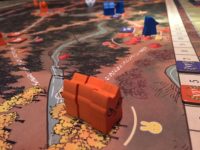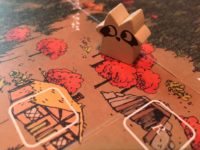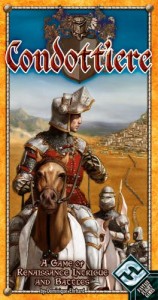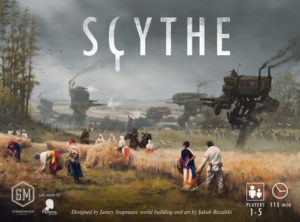- Learning time
- 60 minutes
- First play time
- 120 minutes
Root
Designed by: Cole Wehrle
In Root: A Game of Might and Right players take control of one or four competing factions and fight for (or against) dominance of the woods. You can be the Marquise de Cat, currently in control; the deposed Eyrie, seeking to regain it; the trampled-underfoot Woodland Alliance, looking to undermine both via uprisings, or the solitary Vagabond, who slips in and out of the trees, picking off points like a born survivor.
Depending on which faction you play, Root will be a different experience. The Marquise’s main focus is building: to keep building, she needs a steady supply of wood from her sawmills, but these may come under threat. The Eyrie are powerful but slaves to their decree: they must follow the orders of the decree on each turn or have the whole organisation fall into turmoil! The Alliance begin with no presence on the board at all, and start out simply spreading sympathy for their cause, but can explode into life when they trigger a revolt. And the elusive Vagabond has no designs on controlling the woods – instead, he has quests to complete that help sneak his way to victory, but he can also turn hostile to other factions and pick up points as a lone assassin…
The board shows the woods complete with clearings and paths between them. All factions (bar the Vagabond, who can move through the trees) use the clearings as a way of establishing and measuring power and progress, and the paths to travel between them – though you can only move from or to a clearing you rule: and you rule where you have the most pieces present. Each turn goes through the three phases of Birdsong, Daylight and Evening; though as mentioned above what you do in each of these phases depends which faction you are. At some point it may involve battling, and the combat in Root is pretty simple: the attacker rolls two dice (numbered 0-3) and assigns the higher value to themselves and the lower value to the defender (unless it’s the staunch Alliance, who always claim the higher roll!), before hits are taken and pieces ejected from the forest…
Everyone’s goal is to reach 30 points, and every faction scores in different ways. All have the capacity to craft abilities or items; items which – if the Vagabond is in play – he’ll take off you in exchange for precious cards. Cards are a kind of economy in the game, matching one of the three types of clearing (fox, rabbit, mouse, with bird cards wild) and allowing each faction to utilise them in different ways: the decree for the Eyrie, supporters for the Alliance, rescuing fallen warriors for the Marquise, crafting for all factions.
Play continues either until one player reaches the 30 point mark, or another end-game objective is triggered via one of four Dominance cards – playing these can be a short-cut to victory, as they give you a new objective (control three fox clearings, for instance) but can implode when the other factions combine to prevent your imminent victory!
The guru's verdict

-
Take That!
Take That!
Plenty. Despite the cuddly appearance, Root is a game of combat, both open and insurgent.
-
Fidget Factor!
Fidget Factor!
Moderate. It's not a game for the very young as, partly due to the asymmetry, it's a rather complex game to learn. But once you're familiar with it Root actually plays pretty fast.
-
Brain Burn!
Brain Burn!
It's complex without having a lengthy list of exceptions or special cases to consider. What gives Root a lot of depth is the game is not only different depending on which faction you play, but which factions you play against too. An expansion adds two more (Lizard Cult and Riverfolk) as well as a co-operative option, playing against a Mechanical Marquise.
-
Again Again!
Again Again!
A reasonably large learning curve is worth it, we feel, because Root has so much variety.













Sam says
There are things in Root I don't usually seek out in a game - it's combat-heavy, with a reasonably weighty learning curve, and contains certain cards that can have a huge impact on the complexion of the game and totally shake up your plans. But Root puts it all together brilliantly, packaged it into a thing of beauty, both aesthetically and in terms of the play, where it's always tantalising you with options that you just can't do all of, much as you'd like to. Everyone will have their favourite faction, but each faction has their weakness - the Marquise' incessant need for wood, the Eyrie's potentially flawed decree, the Alliance's upstart status and the Vagabond's need for undamaged, usuable kit. Keen converts can also seek out two additional factions for more options from the Riverfolk Expansion... Despite some real complexity here, Root has a very friendly Learn To Play book that takes you through everything you need to know, and even a Walkthrough, should you desire it, to explain the logic behind each Factions options. It packs a big experience into a reasonably short play, and has sailed into my mental list of favourite games - where I expect it to stay for a long, long time. The hefty caveats here are that 1. it does need a time investment to understand all the factions working, and 2. Despite appearances, Root really is a war game - it can be brutal, and any player pulling ahead of others on the score track will find themselves targeted. It's not one for sensitive - and I don't use the word pejoratively - gamers, but for those who love a proper old ding-dong.